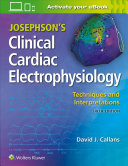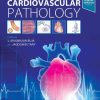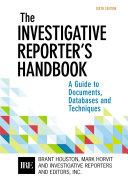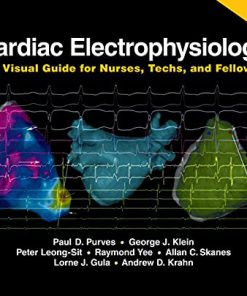Josephson’s Clinical Cardiac Electrophysiology Techniques and Interpretations 6th Edition by David Callans ISBN 1975115562 978-1975115562
$50.00 Original price was: $50.00.$25.00Current price is: $25.00.
Josephson’s Clinical Cardiac Electrophysiology Techniques and Interpretations 6th Edition by David Callans – Ebook PDF Instant Download/Delivery: 1975115562 978-1975115562
Full download Josephson’s Clinical Cardiac Electrophysiology Techniques and Interpretations 6th edition after payment

Product details:
ISBN 10: 1975115562
ISBN 13: 978-1975115562
Author: David Callans
Widely known as the premier electrophysiology text, Josephson’s Clinical Cardiac Electrophysiology provides a thorough understanding of the mechanisms of cardiac arrhythmias and the therapeutic interventions used to treat them. Dr. David J. Callans, personally chosen and trained by Dr. Mark Josephson, continues the tradition of excellence of previous editions while bringing the text fully up to date in every area of this complex field. The sixth edition provides highly visual guidance on the electrophysiologic methodology required to define the mechanism and site of origin of arrhythmia – enabling you to choose the safest and most effective therapy for each patient.
- Focuses on physiologic investigation in the EP lab, using superb illustrations and expert clinical insights, covering proven approaches and methods in this challenging area.
- Includes extensive updates to content on setting up an EP lab, techniques of intra-cardiac electrical recording, atrial flutter and fibrillation, and catheter and surgical ablation in the therapy of arrhythmia.
- Addresses new topics such as anatomy and imaging relevant to electrophysiology.
- Provides comprehensive coverage of mechanisms, clinical implications and limitations of current therapeutic EP interventions including drugs, catheter, and surgical ablations.
Enrich Your eBook Reading Experience
- Read directly on your preferred device(s), such as computer, tablet, or smartphone.
- Easily convert to audiobook, powering your content with natural language text-to-speech.
Josephson’s Clinical Cardiac Electrophysiology Techniques and Interpretations 6th Table of contents:
Preface
- Acknowledgments
- New Features in the 6th Edition
- Overview of Cardiac Electrophysiology
- How to Use This Book
Chapter 1: Introduction to Cardiac Electrophysiology
- Basic Principles of Cardiac Electrophysiology
- Electrophysiologic Properties of the Heart
- Electrical Conduction System and Cardiac Action Potentials
- Introduction to Cardiac Arrhythmias
Chapter 2: Electrophysiologic Methods and Techniques
- Overview of Electrophysiology Studies (EPS)
- Electrode Placement and Catheterization Techniques
- Mapping Systems and Techniques for Arrhythmia Diagnosis
- Pacing Techniques and Protocols
- Electrocardiogram (ECG) Interpretation in Electrophysiology
- Electrophysiologic Tools and Technologies
Chapter 3: Mechanisms of Arrhythmias
- The Electrophysiologic Basis of Arrhythmias
- Reentrant Arrhythmias: Mechanisms and Types
- Triggered Activity and Ectopic Foci
- Abnormal Automaticity and Conduction Disorders
- Short and Long QT Syndromes
- The Role of the Autonomic Nervous System in Arrhythmogenesis
Chapter 4: Supraventricular Arrhythmias
- Atrial Arrhythmias: Mechanisms and Classification
- Paroxysmal Supraventricular Tachycardia (PSVT)
- Atrial Fibrillation and Atrial Flutter: Pathophysiology and Mechanisms
- Diagnosis and Management of Atrial Arrhythmias
- Electrophysiologic Ablation Techniques for Supraventricular Arrhythmias
Chapter 5: Ventricular Arrhythmias
- Ventricular Tachycardia: Mechanisms and Clinical Relevance
- Idiopathic and Secondary Ventricular Tachycardia
- Ventricular Fibrillation: Pathophysiology and Diagnosis
- The Role of Implantable Cardioverter-Defibrillators (ICDs)
- Electrophysiologic Evaluation of Ventricular Arrhythmias
Chapter 6: Conduction Disorders and Heart Block
- First-Degree, Second-Degree, and Third-Degree Heart Block
- Conduction System Disease and Implications for Cardiac Function
- Sinus Node Dysfunction and Sick Sinus Syndrome
- His-Purkinje System Disorders
- Evaluation and Management of Conduction Disorders
Chapter 7: Syncope and Sudden Cardiac Death
- Mechanisms of Syncope in Cardiac Electrophysiology
- Risk Stratification for Sudden Cardiac Death (SCD)
- Electrophysiologic Studies in Patients at Risk of SCD
- Role of ICDs and Other Therapies for SCD Prevention
- Post-Resuscitation Evaluation and Care
Chapter 8: Electrophysiology of the Heart in Pediatric and Congenital Conditions
- Congenital Arrhythmias and Cardiac Conduction Abnormalities
- Pediatric Electrophysiology Techniques
- Arrhythmias in Children with Structural Heart Disease
- Management and Treatment in Pediatric Patients
Chapter 9: Ablation Techniques and Technologies
- Principles of Catheter Ablation
- Radiofrequency Ablation and Cryoablation Techniques
- Ablation of Atrial Fibrillation and Ventricular Tachycardia
- Advances in Ablation Technology and Mapping Systems
- Complications and Risks of Ablation Therapy
Chapter 10: Pharmacologic Therapy for Arrhythmias
- Antiarrhythmic Drugs: Mechanisms and Classifications
- Role of Drugs in Acute and Chronic Arrhythmia Management
- Drug-Induced Arrhythmias: Identification and Management
- Adjunctive Pharmacotherapy in Electrophysiology
- New and Emerging Antiarrhythmic Agents
Chapter 11: Advanced Electrophysiology and Mapping Techniques
- Three-Dimensional Mapping Systems and Their Applications
- Electroanatomical Mapping for Complex Arrhythmias
- Use of Magnetic Navigation Systems
- Integration of Imaging Technologies with Electrophysiology
- Multidisciplinary Approach to Complex Arrhythmia Management
Chapter 12: Clinical Decision-Making in Cardiac Electrophysiology
- Indications for Electrophysiology Studies
- Integrating Electrophysiology Findings with Clinical Management
- Risk Stratification and Treatment Algorithms
- Managing High-Risk Arrhythmia Patients
- Personalized Treatment Approaches
Chapter 13: Future Directions in Cardiac Electrophysiology
- Emerging Technologies in Electrophysiology
- The Role of Artificial Intelligence and Machine Learning
- New Frontiers in Cardiac Imaging and Simulation
- Stem Cell Therapy and Regenerative Approaches in Arrhythmia Treatment
- Advances in Gene Therapy and Precision Medicine
Chapter 14: Case Studies in Clinical Cardiac Electrophysiology
- Real-World Case Examples of Arrhythmia Diagnosis
- Electrophysiology Study Results and Treatment Outcomes
- Case Studies of Complex Arrhythmias and Treatment Challenges
- Learning from Clinical Experiences
Appendices
- A. Key Terms and Glossary of Cardiac Electrophysiology
- B. Basic Electrocardiogram (ECG) Interpretation Guide
- C. Electrophysiology Study Protocols and Guidelines
- D. Resources for Further Reading and Research
References
Index
People also search for Josephson’s Clinical Cardiac Electrophysiology Techniques and Interpretations 6th:
what is clinical cardiac electrophysiology
clinical cardiac electrophysiology techniques and interpretations
what is cardiac electrophysiology procedure
what is cardiac electrophysiology
josephson’s clinical cardiac electrophysiology pdf
Tags:
David Callans,Josephson’s Clinical,Cardiac Electrophysiology
You may also like…
Medicine - Clinical Medicine
Cardiac Electrophysiology in Clinical Practice 2nd Edition David T. Huang
Education Studies & Teaching - Educational Theory
Sociological Interpretations of Education 1st Edition David Blackledge
Medicine - Cardiology
Medicine - Cardiology
Cardiac Electrophysiology: A Visual Guide for Nurses, Techs, and Fellows, 2nd Edition Purves
Medicine - Cardiology











